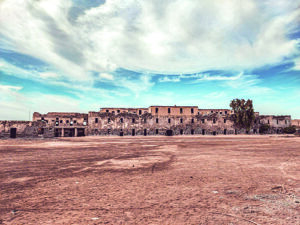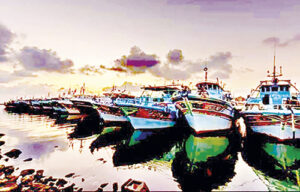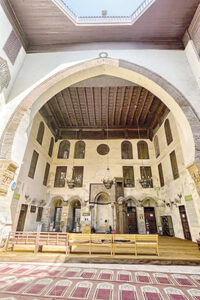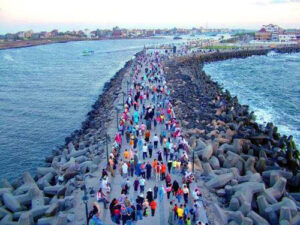Damietta, around 250 kilometres north-east of Cairo, is known as the furniture industry hub of Egypt.
Thousands of workshops and small factories produce the finest pieces of furniture every day in the city.
Most of these pieces end up in other parts of Egypt and sometimes travel abroad to adorn the homes of people in other countries.
Few people know, however, that Damietta contains tourist attractions that qualify it to become a major tourist city.

Damietta is populated by over 1 million people, most of them working in the furniture industry and fishing because Damietta has its sizeable coast on the Mediterranean.
The city is famous for its guava farms and palm trees that especially decorate the coast of Ras el-Bar, a popular summer vacation spot for middle-class Egyptians.
Damietta is a major exporter of palm trees. It is also a major producer of a wide range of important crops, such as wheat, cotton, rice, potatoes, lemons, grapes and tomatoes.
It is also a sweets and sardine canning centre of activity.
Damietta is the Egyptian city where the Nile River meets the Mediterranean. This is why it an important fishing centre where thousands of people work in fishing and related industries.

The city also boasts one of the nation’s most important seaports.
The city bore witness to a large number of historical events, including since the times of the Pharaohs.
It is rich in archaeological that are scattered across it, especially in Manzala Lake area and on the banks of the Nile.
Archaeological evidence suggests the richness of these areas. The coastal area of the city is also home to a large number of sunken antiquities.
The city’s monuments cover a wide range of historical eras, including the Roman, Islamic and Christian eras.
Radwaniyah Mosque is one of the most important landmarks of the city. It dates back to before 1039 AH. The mosque consists of opposite sections that are topped by an ornate wooden ceiling. The dome of the mosque is built on four columns and rises about 20 metres, a main feature of Mamluk architectural styles.
The Ansari Dome is also an important landmark in the city. The dome dates back to the Ottoman era. It is constructed on a high room, a remainder of the Ansari corner in Faraskur, one of the administrative divisions of Damietta.
Equally important is the Dome of the Dyasti which is located Faraskur. The dome is a polygonal structure erected on a high room. It dates back to the Ottoman era as well.

Tabia Orabi is a site of extreme importance in Damietta as well. It was constructed in the 18th century over an area of 122 square metres.
It is a military fortress, the remainder of a series of military fortifications that were constructed to protect Egypt from sea invasion.
The fortress consists of a wall, watch and defence towers, some barracks for soldiers, and a small mosque.
Equally important in Damietta is the Tal Athar el-Barshaya area which is Faraskur as well.
The area contains a unique Roman bath that was found in the eastern Delta region. The bath has a lower tank for storing water, interspersed with sewage lines. A residential area was found adjacent to this bath, indicating that this area was undulating with urbanisation and markets. The area also contains a factory for juice and oil extraction. It is also home to a tomb that dates back to the Roman and Coptic eras.
Damietta is a three-hour drive from Cairo. There are several transport options to the city, including buses operated by a large number of private sector transport companies.







Discussion about this post